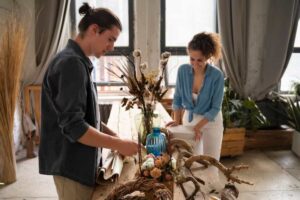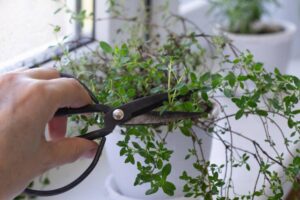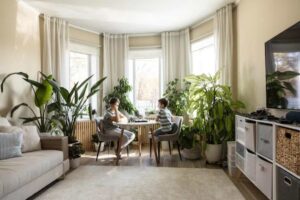The Interior Blog
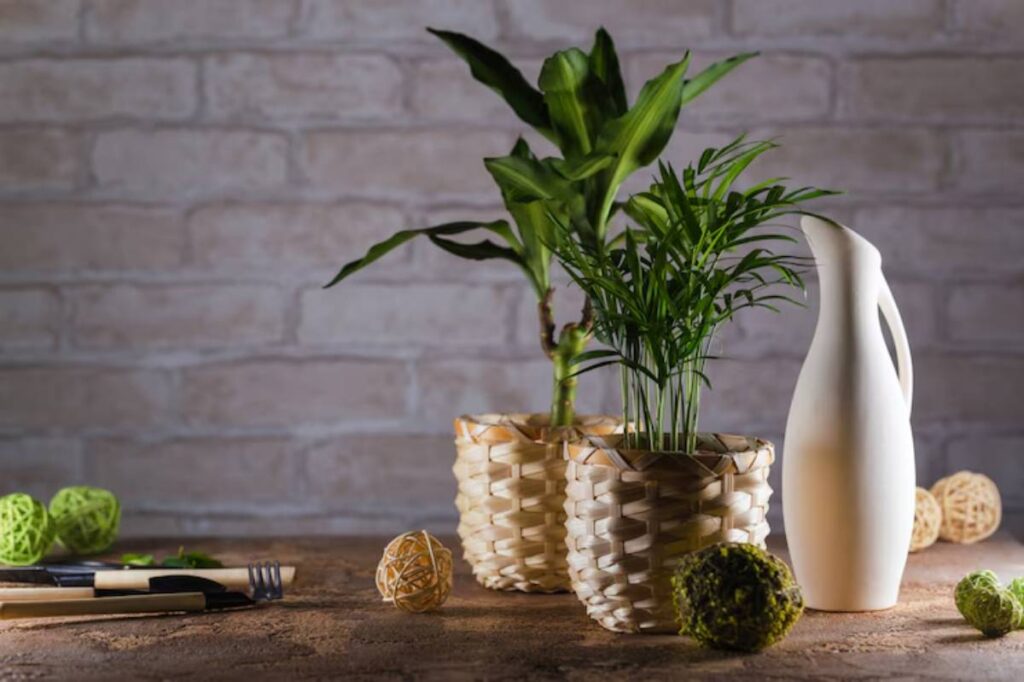
Stylish Placement Ideas for Non-Toxic Plants
There’s something magical about stepping into a room filled with lush greenery. Indoor plants bring life, texture, and calm to our living spaces — transforming even the dullest corners into vibrant havens. But if you have curious pets or little ones in tow, that aesthetic joy can come with a fair share of worry.
Fortunately, decorating with non-toxic plants doesn’t mean sacrificing style. In fact, it opens up a world of thoughtful, creative placement ideas that combine indoor plant safety with visual harmony. Whether you’re working with a light-filled loft or a compact studio, the key is to find balance between design, functionality, and care, all while keeping your space safe for everyone.
In this guide, you’ll discover practical, stylish placement ideas for non-toxic plants, along with expert greenery tips for pet- and child-friendly interiors. We’ll cover everything from where to position your plants for maximum impact to how to layer them like a designer without compromising safety.
Why choose non-toxic plants for home décor?
Peace of mind in everyday life
Whether you’re a new parent or a lifelong pet owner, peace of mind goes a long way. Many popular indoor plants — like philodendrons, pothos, and peace lilies — contain compounds that can irritate or harm when ingested.
By choosing non-toxic greenery, you eliminate a major source of anxiety. You can confidently decorate any room knowing your plants are beautiful and safe, even if a toddler yanks a leaf or your cat decides to explore.
Easier maintenance in busy households
With non-toxic plants, there’s less need to hide or restrict access. This allows you to style more openly and naturally, without barricading shelves or constantly monitoring behaviour.
And when safety is built into the décor, you create a more relaxed, welcoming space — for your guests, your family, and yourself.
Top stylish placement ideas for non-toxic plants
Ready to integrate safe greenery into your space? Let’s explore smart, design-savvy placements that keep your home both beautiful and safe.
1. Floating wall shelves with cascading foliage
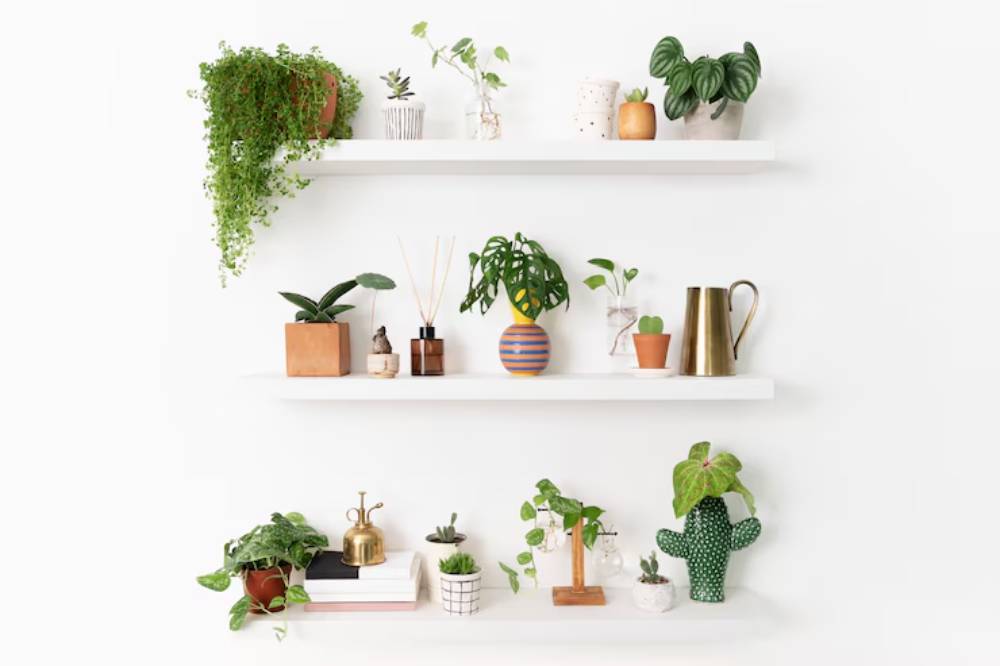
Perfect for: Spider plants, baby tears, or trailing peperomia
Floating shelves provide the ideal mid-height zone for trailing plants. Mount them just above toddler height — or higher, depending on your setup — and let non-toxic greenery spill over the edge in natural waves.
Styling tips:
- Mix plants with small decorative items like books or vases
- Use planters in muted colours for a clean, Scandinavian feel
- Keep spacing asymmetrical for a relaxed, lived-in look
This setup works especially well in living rooms and hallways, where vertical space often goes underutilised.
2. Windowsill gardens with safe sunlight-lovers
Perfect for: Haworthia, fittonia, or African violets
Non-toxic plants that love sunlight can thrive in windowsill arrangements — and they look stunning lined up in uniform pots or eclectic containers.
Placement ideas:
- Kitchen windowsills are ideal for herbs and compact greens
- Bedroom windowsills benefit from soft-leafed, air-purifying options
- Use terracotta or ceramic pots with saucers to protect your sills
To enhance the look, consider coordinating with curtain fabric, paint tones, or windowsill décor like candles and figurines.
3. Corner stands for volume and height
Perfect for: Areca palms, parlour palms, or Boston ferns
A tall plant stand or layered tiered shelf brings structure and fullness to awkward corners. Choose planters in natural finishes — think rattan, wood, or concrete — for a cosy yet grounded vibe.
Why it works:
- Keeps plants off the floor (especially important for puppies or toddlers)
- Adds vertical balance to rooms dominated by low furniture
- Creates a soft, organic “frame” to anchor seating areas
If you love texture, Boston ferns are a brilliant choice. They’re non-toxic and deliver a soft, almost fluffy aesthetic.
4. Bookshelves turned botanical galleries
Perfect for: Prayer plants, calatheas, and fittonia
Bookshelves aren’t just for novels and photo frames. Style your shelves with low-growing, leafy, non-toxic plants that add movement and life between your objects.
How to style:
- Place small pots at alternating heights
- Allow trailing plants to hang gently off the shelf edges
- Create colour balance by pairing green foliage with warm-toned books or gold accents
This look works beautifully in home offices or dens, where you want productivity with a natural, calming edge.
5. Bathroom plant pairings for a spa-like vibe
Perfect for: Spider plants, calatheas, and Boston ferns
The bathroom is often overlooked as a plant styling space, but it’s one of the best environments for humidity-loving non-toxic plants.
Top tips:
- Use suction-cup planters on tiled walls
- Hang plants from shower curtain rods using macramé holders
- Style toilet tank tops or vanity ledges with small, soft-edged pots
Bathrooms often lack floor space, so think vertically. Choose plants that benefit from steam and tolerate lower light.
6. Dining table centrepieces with a twist
Perfect for: African violets, baby rubber plants, or compact fittonia
Skip the traditional floral centrepiece and opt for a vibrant non-toxic plant instead. Small, colourful options add cheer and elegance without risk.
Creative options:
- Place multiple mini pots in a wooden tray or ceramic bowl
- Pair with candles or natural stones for a zen-inspired display
- Rotate with seasonal décor or table runners to refresh the look
This is a brilliant way to style safe greenery at eye level without worrying about mealtimes or curious little hands.
How to layer non-toxic plants for design depth
Great styling isn’t about scattering plants randomly — it’s about intentional placement that feels effortless. Here’s how to master the art of layering.
1. Vary heights using plant stands and shelves
Don’t let your greenery sit flat. Use stands, stacked boxes, or wall brackets to lift some plants higher than others.
2. Combine leaf shapes and textures
Pair broad-leafed calatheas with thin, trailing plants like spider ivy. Mix glossy finishes with matte to add visual complexity.
3. Group in threes or fives
Odd-numbered groupings feel more organic. Place one tall, one mid-height, and one trailing plant together for a cohesive yet dynamic arrangement.
If you’re looking to take it further, our guide on layering heights to create visual balance with plants dives deeper into height-based design.
Where not to place your non-toxic plants
Even the safest plants need proper placement.
Avoid these common missteps:
- Near radiators or heaters: Leads to drying and leaf burn
- Directly on unstable furniture: One accidental bump and it’s a mess
- Within reach of teething pets or toddlers: While the plant may be safe, chewing still isn’t ideal
- Low-ventilation areas: Encourage mould or pests, even with safe plants
Safe décor is about the full picture — from plant choice to environmental factors.
Choosing the right pots for safety and style
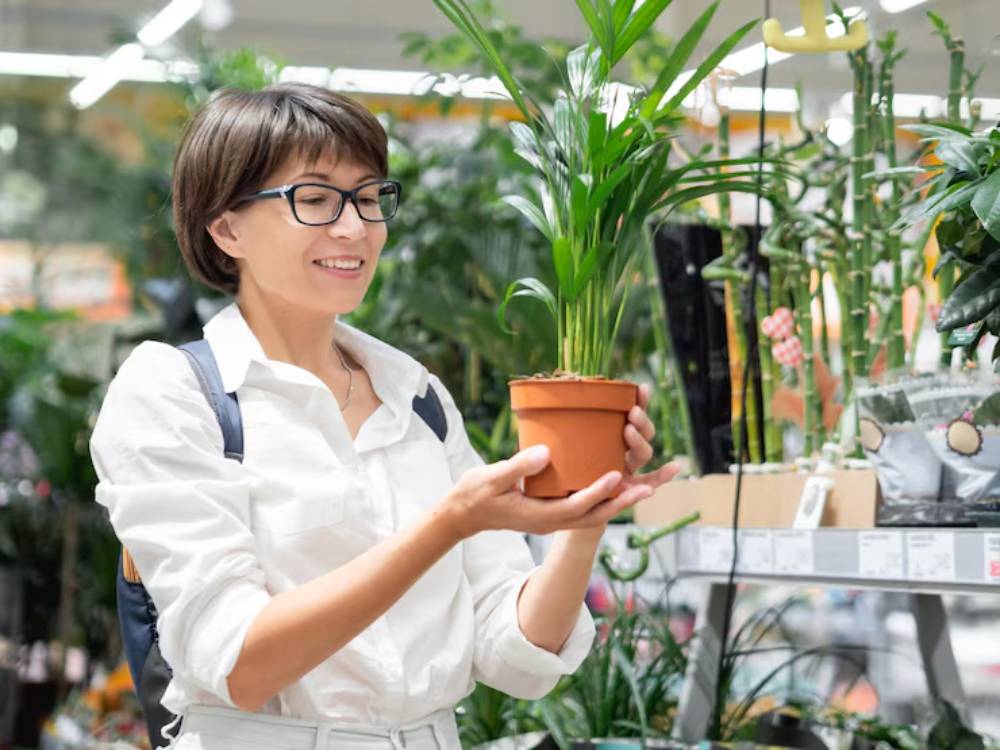
Even the most beautiful plant can look off if the container isn’t right.
Choose pots that are:
- Stable and wide-based to avoid tipping
- Non-breakable or placed out of reach in high-traffic areas
- Complementary to your interior palette for design harmony
Use felt pads under pots to protect furniture and allow easier sliding for cleaning.
For deeper guidance on marrying form with function, read Choosing the Right Soil and Planter Combo for Style — essential for any indoor plant lover.
Conclusion: Decorate with confidence and care
Creating a safe, stylish home filled with greenery doesn’t mean compromising on design. With non-toxic plant décor, you can craft a welcoming space that reflects your personality and values, all while keeping your children, pets, and peace of mind intact.
From floating shelves to bathroom ferns, every room offers an opportunity to showcase nature in a way that feels both beautiful and safe. And with the right placement ideas, you’ll elevate your interior while creating a sanctuary for everyone who lives there.
Ready to refresh your space? Pick one new placement idea from this guide and try it in your home this week. Snap a photo, share your setup, or tell us how non-toxic greenery has transformed your home — we’d love to hear from you in the comments.



